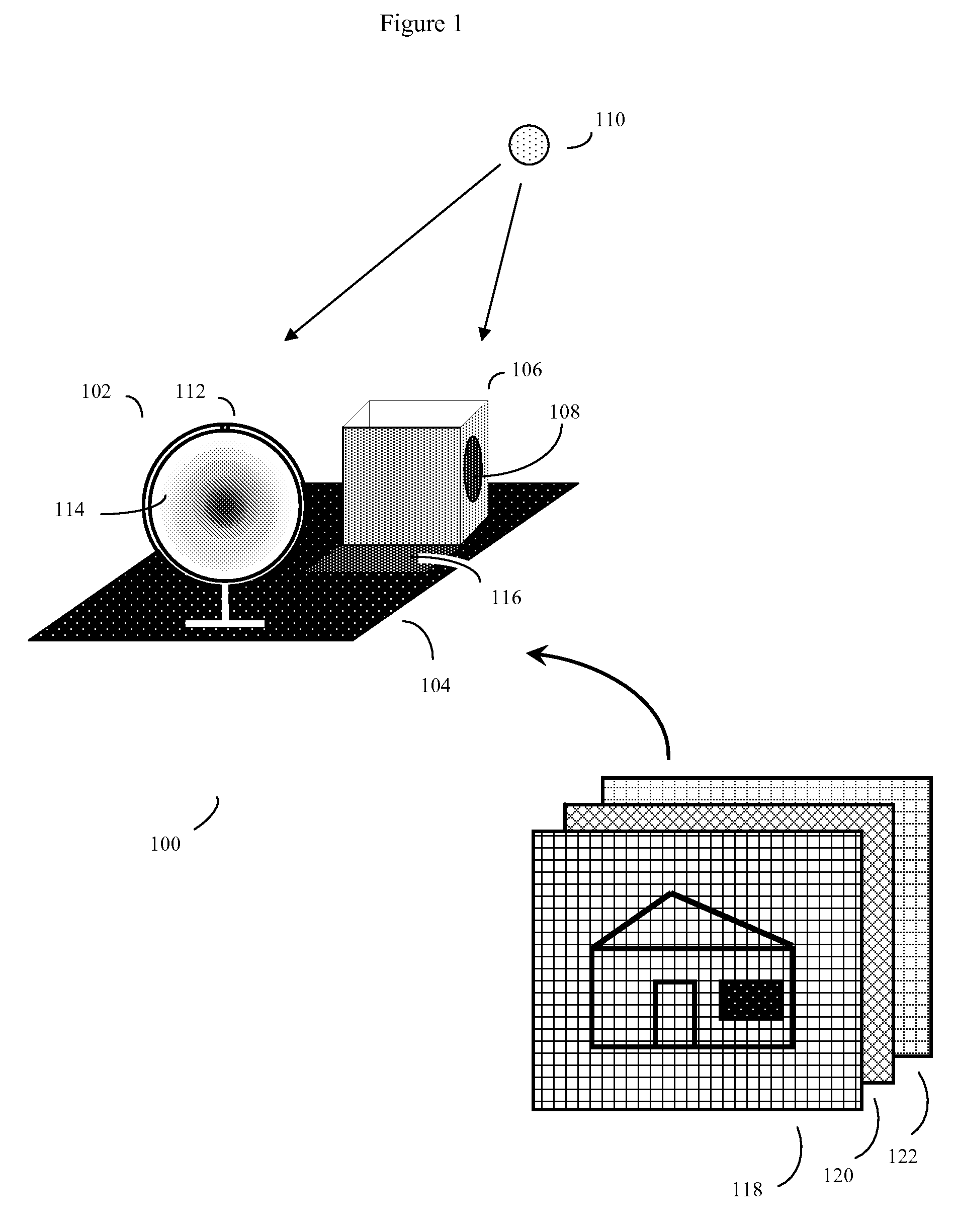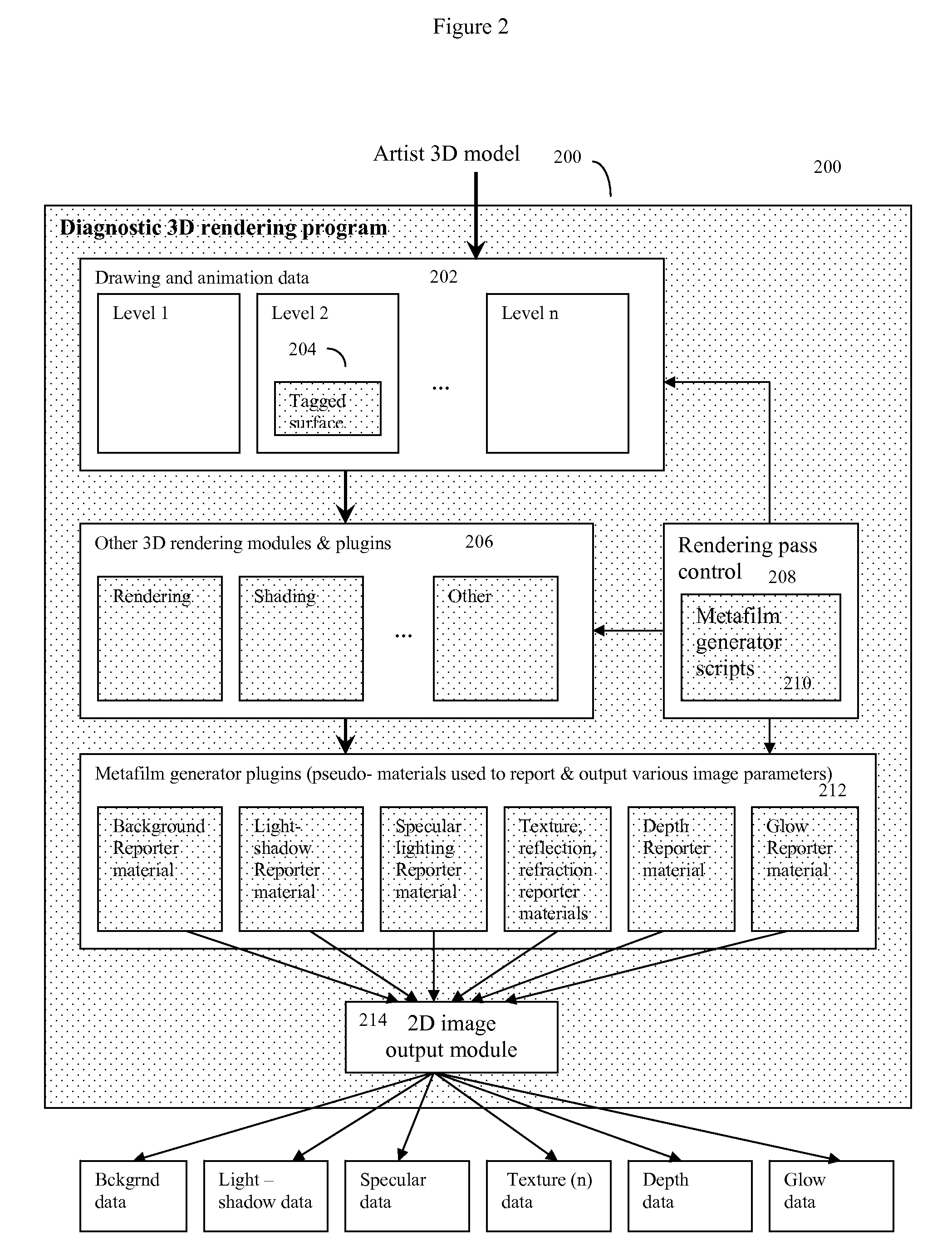Method of Customizing 3D Computer-Generated Scenes
a computer-generated scene and customization technology, applied in the field of 3d computer-generated scene customization, can solve the problems of affecting the ambient occlusion of the scene, material or texture changes may need to be reflected or refracted, etc., and achieve the effect of low cost, high cost and high quality
- Summary
- Abstract
- Description
- Claims
- Application Information
AI Technical Summary
Benefits of technology
Problems solved by technology
Method used
Image
Examples
Embodiment Construction
[0035]To better understand the nature of the problem, consider what happens in a situation where a 3D graphics model is rendered and viewed from a moving point of view, such as in a video. When 3D graphics scenes move, the angles of lighting continually change, various 3D objects are blocked and unblocked by other 3D objects, images from one 3D graphics object, such as a shiny or transparent object, may be refracted or reflected by other 3D graphics objects. Now imagine the problems of simply trying to drop in a new image or video into the rendered scene by a standard digital compositing process, such as alpha blending. Unless the new image or video is processed to look entirely natural in its new context, with variable angles, lighting, surface shapes, surface textures, reflection, refraction etc., the new image or video will look unnatural. Instead of appearing as a real element of the 3D “world”, the new image or video will appear as if it has simply been pasted on to the scene, ...
PUM
 Login to View More
Login to View More Abstract
Description
Claims
Application Information
 Login to View More
Login to View More - R&D
- Intellectual Property
- Life Sciences
- Materials
- Tech Scout
- Unparalleled Data Quality
- Higher Quality Content
- 60% Fewer Hallucinations
Browse by: Latest US Patents, China's latest patents, Technical Efficacy Thesaurus, Application Domain, Technology Topic, Popular Technical Reports.
© 2025 PatSnap. All rights reserved.Legal|Privacy policy|Modern Slavery Act Transparency Statement|Sitemap|About US| Contact US: help@patsnap.com



